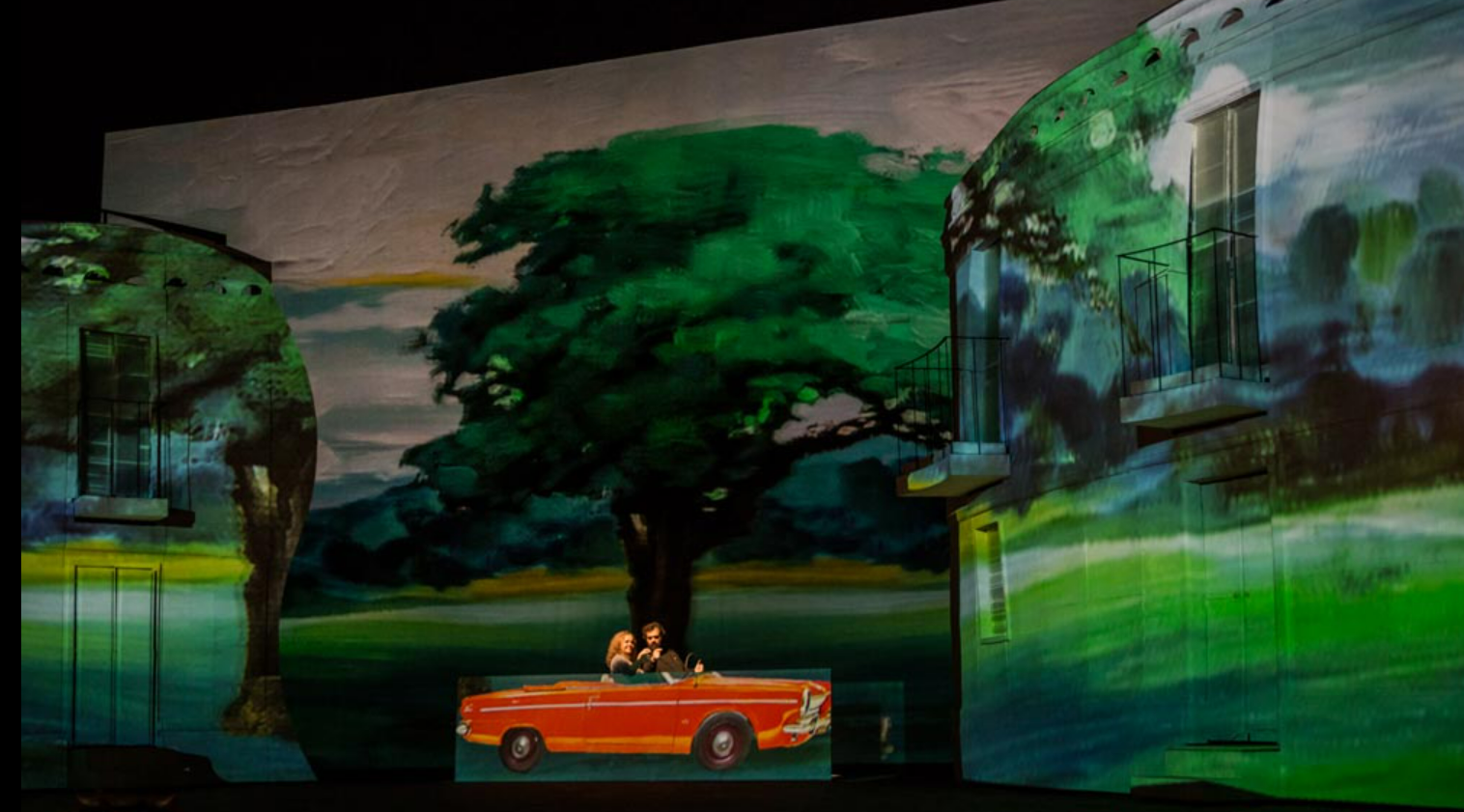
As new virtual technologies make their way into the arts and on-stage, there is a much more tangible technology currently being utilized in theater and most audience members do not even realize they are watching it. Like many technological ideas, the concept of 3D printing has been around much longer than the actual capability to print, however this technology has become much more accessible as it has been further developed. It is often used to build props in theater and film, design scale model sets, and offer solutions to lighting design problems on the West End. While these creations are evolving the theater industry, the use is still relatively restricted to printing smaller items. As 3D printing expands into construction and printing on a large scale, will there be a future where 3D printing in the theater goes beyond props and will be used to create full-scale Broadway theatrical sets?
What is 3D printing?
3D printing, otherwise known as additive manufacturing, is the process of making three dimensional solid objects from a digital file. Although the concept of 3D printing has existed since 1945, it was put into early practice in 1971. It starts with a 3D model either created from the ground up or downloaded from a 3D library, then it needs to be uploaded to a 3D printing software. As this technology has developed, a lot of software has too. This provides a variety of options depending on what you are using 3D printing for. Tinkercad is a free version that works on your browser and provides lessons for beginners. After the printing software makes your file “printable”, it needs to be put through a slicing software before it can be fed to a 3D printer. Slicing is the process of, quite literally, slicing your 3D model into hundreds or thousands of pieces so the printer can print layer by layer. Once the slicing process is done, the file is ready to be fed to the printer by USB or Wi-Fi where the object will be built layer by layer. Early 3D printers were only able to print a resin or plastic like material, however advancements have made it possible for sturdier alternatives like concrete or metal alloys to be printed with the right equipment. As 3D printing is ever-growing in demand, it is estimated the 3D global printing market will reach $41 billion by 2026 and transform every major industry. It is common to see the use of 3D printing in consumer products, industrial products, dental products, reconstructing fossils, replicating ancient artifacts, movie props, and much more.
Theatrical Props
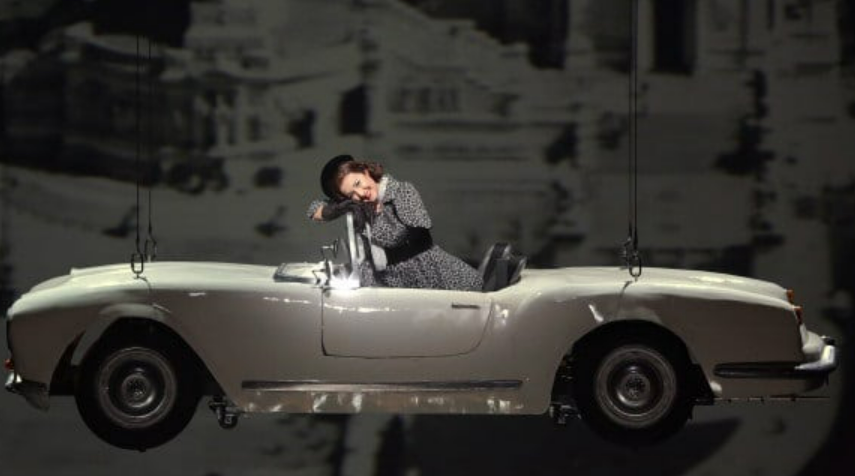
3D printers are starting to become an item you may see in a small-town theater workshop and even some university theater programs have made printer purchases due to the benefits they bring. Productions sometimes require very specific props that are either too expensive, will take too long to find, cannot be built, or even do not exist anymore. The solution is 3D printing. Once a digital 3D model is created and sliced, it can be sent to the printer which saves a lot of time and money for the theater. Additionally, once an item is printing, that person can go do other tasks with their day. Even Broadway is starting to adapt to this technology and we are seeing it on more stages. In Head Over Heels the Musical, there is a scene that involves a full vase of flowers to fall and break every night. It would be too expensive and infeasible to replace this vase every show, so they came up with a digital design that was 3D printed with the edges of the vase magnetized. This made the vase able to break in the same way and put back together show after show. Another amazing feat of 3D printing for the stage was for a production of Don Pasquale by Donizetti at the famous opera house, La Scala. The designer wanted the lead soprano to fly over “Rome” at the end of the first act in a rare 1950s convertible Lancia Aurelia B24. There was no way to secure or build this real car, nor be able to make it “fly” on-stage while holding an opera singer. In 85 hours, the Lancia Aurelia B24 was printed with everything it intended to do. It rolled on-stage, the doors were able to be opened, the engine “smoked”, and was able to fly with the opera singer over “Rome”.
Scale Model Set Design
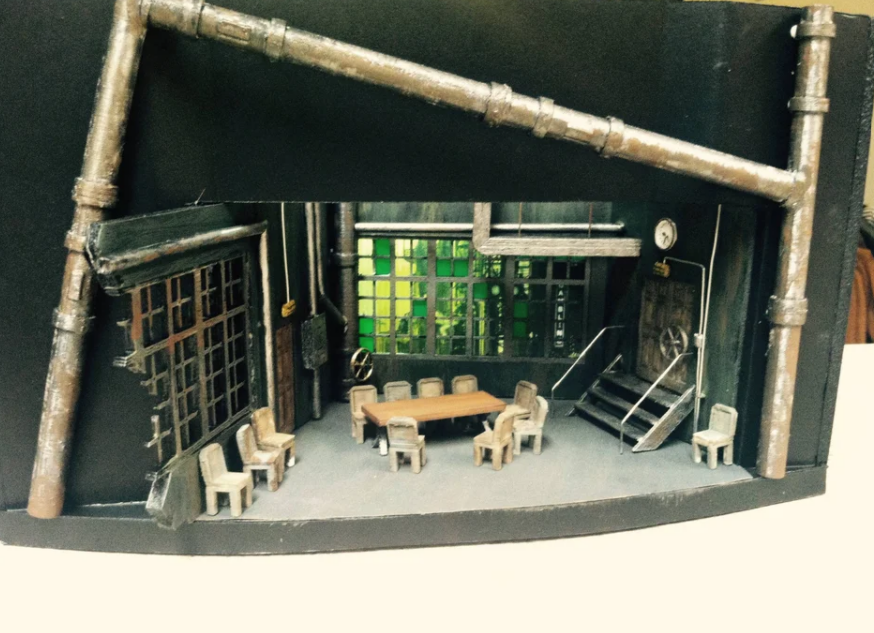
When designers for a production present their ideas, they will often use online renderings and some kind of physical scale model to showcase their ideas to the director, producers, and other designers. It can be tedious putting together a scale model of a set design because everything is miniaturized and details that small can be hard to get right. Remember making those shoebox book reports in elementary school? Well, this is pretty similar with just more precision in the scale. It was hard then and is hard now. If a designer only presents an online rendering, it can be difficult to get a sense of the space that only a physical model can provide. Many designers have been solving this problem by utilizing 3D printing for their scale models. They are able to create what they need for their design, including all the specific details that could never be captured by building it by hand. If the director wants to change an element of the design, the designer can just update the 3D model file and reprint the new version which saves a lot of time and allows for quicker turnaround. Additionally, if a designer is not comfortable building new digital 3D models, many files exist online for things that may be standard design elements like chairs, stairs, tables, and doors. It is important to use this technology only when it saves time, money, and improves the quality of our work. While the printing of these items may take hours, the supervision it requires is minutes, freeing up lots of time.
3D Printing in the Entertainment Industry
As 3D printing is slowly integrating into theatrical design processes, it has been wildly adopted by one of the largest entertainment industry franchises, Disney’s Marvel Studios. They are utilizing this technology to make props and costumes across many movies. In Iron Man 2, the entirety of Robert Downey Jr.’s Iron Man suit was 3D printed and painted. In Avengers: Infinity War, Chris Hemsworth’s hammer used for Thor was 3D printed in 34 pieces that were perfectly sized for his dimensions. Additionally, the costume of Queen Ramonda of Wakanda in Black Panther and the armor costume for the character Korath in Guardians of the Galaxy were both 3D printed. Hollywood operates on a very tight schedule and wasted time is lost money. If a director did not like the look of a prop or costume or something broke, it would take multiple days to have the problem resolved. With 3D printing, the model can be updated and reprinted in a matter of hours.
3D Printing in Construction
Up until now we have discussed 3D printing on a relatively small scale, however 3D printers are starting to be used to print large-scale structures, like houses. The material being printed is most often concrete out of 3D printers that are too large to fit in your standard theater workshop. There are a ton of pros to using 3D printing in construction like speed, waste reduction, design freedom, and a reduction of human error. A building can be made in a matter of days and since 3D printing is an additive process, a lot of waste is reduced due to the structure being built layer by layer. With all the benefits this technological advancement offers, there are still some challenges when considering utilizing 3D printing in construction. For example, to adopt this technology on construction sites it comes with a high cost of purchasing or renting the equipment, as well as coordinating the logistics of moving the equipment to the construction site. Other challenges are labor shortages of people specifically trained with this technology, quality control, and regulations. As any new technology enters an industry, it takes time for it to be widely adopted and implemented in a safe, controlled way. Using 3D printing on this large of scale is still new and will take some time to work out the challenges.
The First 3D Printed Scenography
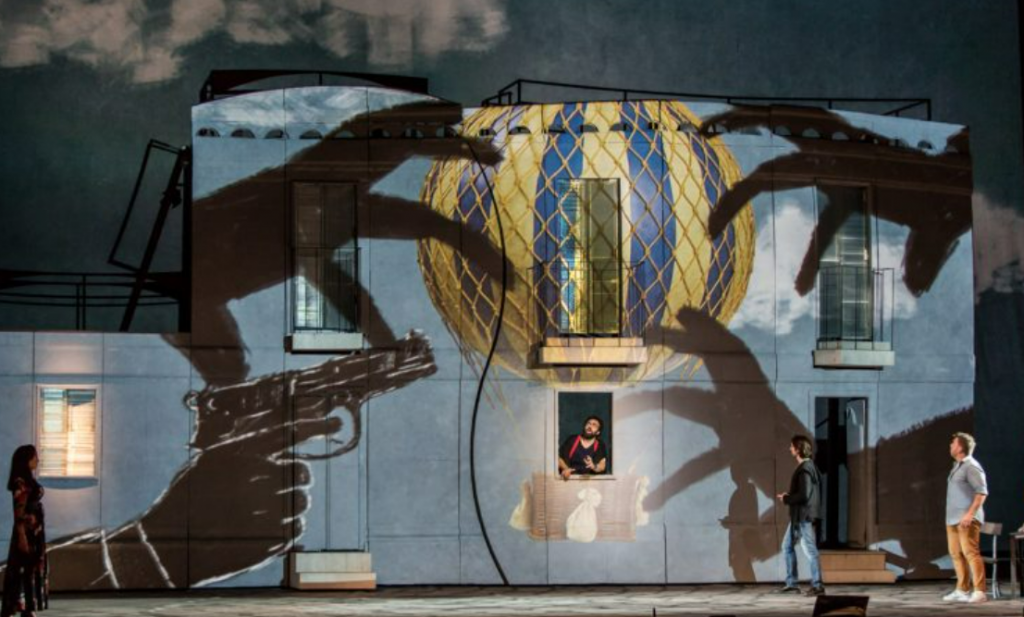
Now we know that 3D printing can be used to build large structures like buildings and house, can this be applied to theatrical scenography or Broadway theatrical sets? Well, this technology has not been commonly used in this way yet, however one Opera Theater in Rome may be the first to have experimented with this. In their production of Fra Diavolo by Daniel Auber, the scenographer created a small-scale model of two deformed historical buildings with large facades, windows, doors, and terraces. The opera teamed up with a 3D printing company to have this printed at a large enough scale to fit their theater. The design had to be split into 223 pieces to be printed on 5 printers. The process took three months to complete. The pieces were transported from the warehouse they were being printed to the theater where they were assembled. The printers met their deadline and there was no error made that couldn’t be quickly fixed.
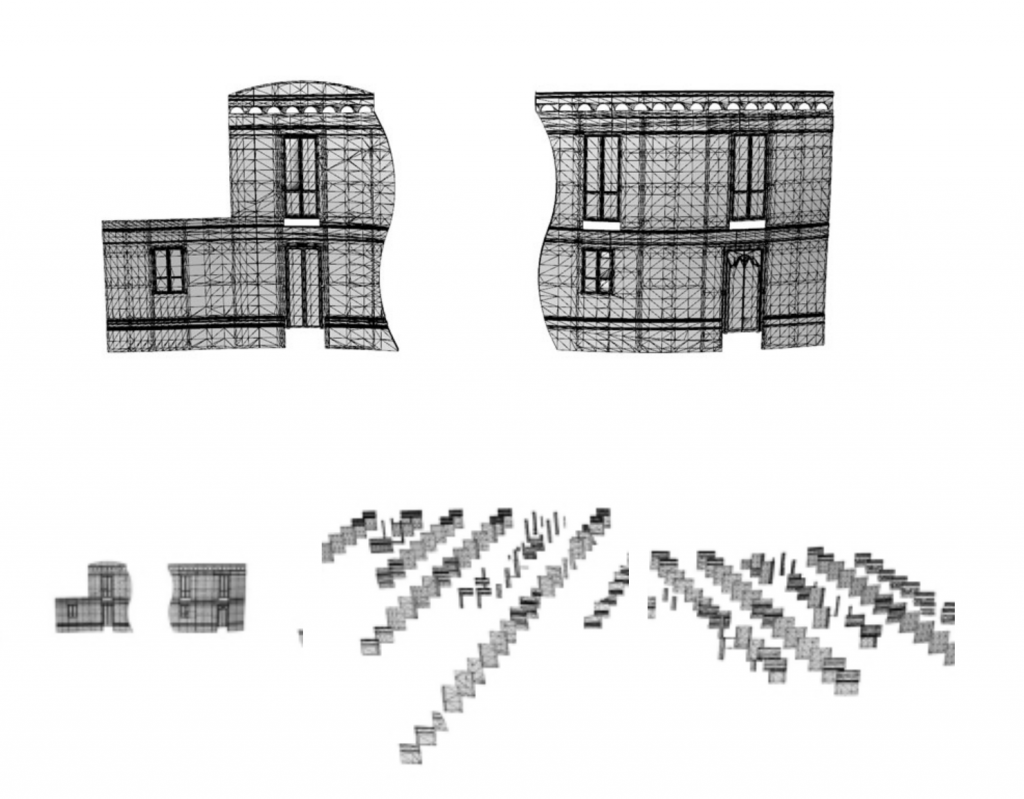
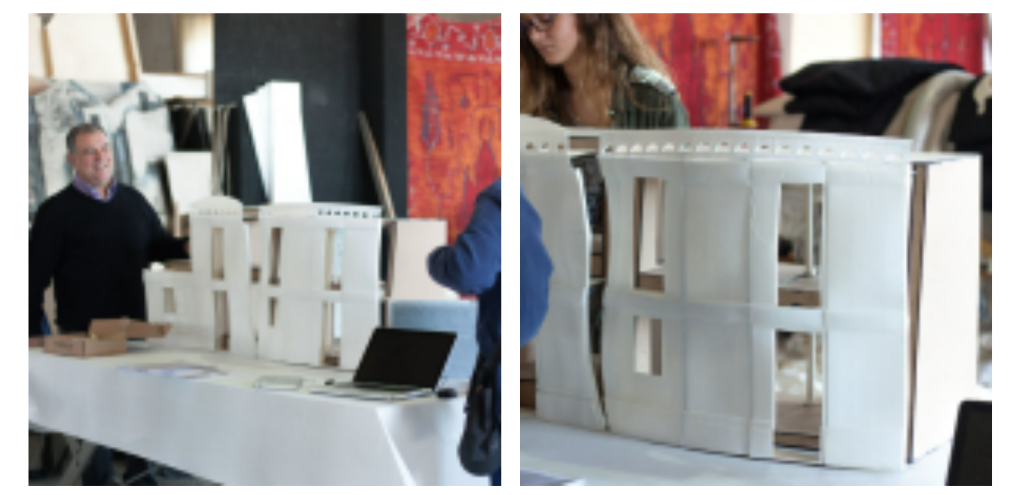
Conclusion
3D printing is making its way into the theatrical world, as well as the entertainment industry in very practical ways, however it will take some more time to see this technology being utilized to build Broadway theatrical sets. Many New York City workshops do not have the space to store a printer with the capacity to print at such a large-scale, nor is it a possibility to purchase and store multiple printers to be able to break the print project up in pieces. Additionally, fore-fronting any technology into a new ability costs a lot of money because it is not readily used. Purchasing equipment, training enough labor to utilize the equipment, and regulating it with different theatrical unions all take a lot of time. So, while I do not see this technology being utilized in this way anytime soon, I do see a future where this becomes more normalized with the possibility of one or two New York City scene shops specializing in only 3D printing. Until then, I believe it will be more common to see theaters and universities that own their own 3D printer and theater tech students being trained on how to create and support a theater’s 3D printing capability.
References
Andreoli, Maurizio. “The First 3D Printed Scenography.” 3D Printers WASP. Accessed February 20, 2022. https://www.3dwasp.com/en/the-first-3d-printed-theatre-scenic-design/.
Ellis, Grace. “3D Printing in Construction: Growth, Benefits, and Challenges.” Digital Builder, February 18, 2022. https://constructionblog.autodesk.com/3d-printing-construction/.
“First Permitted 3D Printed House in Florida | Printed Farms Strikes Again.” YouTube. YouTube, August 13, 2021. https://www.youtube.com/watch?v=mEK9PnE8qcU.
Gentry, Bryan. “3D Printer Brings Ideas to Life for Theatre Students.” University of Lynchburg, March 12, 2018. https://www.lynchburg.edu/news/2018/03/3d-printer-brings-ideas-to-life-for-theatre-students/.
Goulding, Charles. “The Evolving Entertainment Industry and 3D Printed Props.” Fabbaloo, July 14, 2021. https://www.fabbaloo.com/news/the-evolving-entertainment-industry-and-3d-printed-props.
Hanaphy, Paul, Kubi Sertoglu, Hayley Everett, Michael Petch, and Michael Molitch-Hou. “Owen Collins Takes 3D Printing on a Date.” 3D Printing Industry, August 10, 2016. https://3dprintingindustry.com/news/owen-collins-takes-3d-printing-date-theatre-24647/.
Hollingsworth, Forrest, and Naomi Jeffrey Petersen. “Tactile Teachables: Expanding Accessibility with 3D Printing.” EDUCAUSE Review. Accessed February 20, 2022. https://er.educause.edu/articles/2017/11/tactile-teachables-expanding-accessibility-with 3dprinting#:~:text=3D%20printing%20and%20modeling%20is,repositories%20of%20readily%20usable%20models.
“Lighting up the West End with High Accuracy 3D Printing.” Formlabs. Accessed February 20, 2022. https://formlabs.com/blog/lamp-pencil-3d-printing-entertainment-light-design/.
Somers, Ira. “Stage Design Just Got Easier with 3D Printing.” Massivit 3D. Accessed February 20, 2022. https://massivit3d.com/blog/stage-design-just-got-easier-with-3d-printing/.
Sweet, Chad. “3D Printing for the Theatre.” Reno Little Theater, July 1, 2021. https://renolittletheater.org/3d-printing-for-the-theatre/.
“The Top Applications of 3D Printing in the Movie Industry.” 3Dnatives, July 19, 2021. https://www.3dnatives.com/en/top-applications-3d-printing-movie-industry-090720214/#!
Turney, Drew, Rina Diane Caballar, and Carolin Werthmann. “History of 3D Printing: It’s Older than You Think [Updated].” Redshift EN, January 31, 2022. https://redshift.autodesk.com/history-of-3d-printing/.
“What Is 3D Printing?” 3D Printing, September 17, 2021. https://3dprinting.com/what-is-3d-printing/.